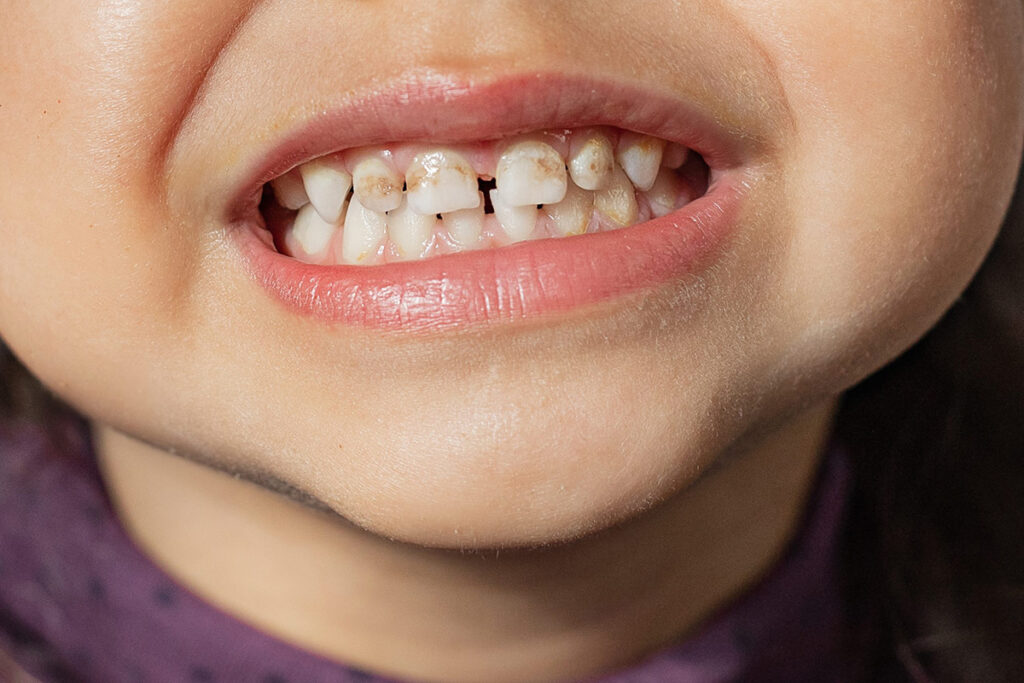What is enamel hypoplasia?
Dental enamel hypoplasia is a developmental dental defect that causes thin or inadequate tooth enamel.
Because this defect begins to appear while tooth enamel is developing, enamel hypoplasia is most common in baby teeth but can also occur in permanent teeth and can impact one tooth or multiple teeth.
What is enamel?
Enamel is the hard layer on the outside of your teeth, which protects the inner parts of your teeth and defends against cavities, tooth sensitivity, and bacterial infections.
Enamel does not replace itself or regrow. If your enamel wears away or is damaged, you are more at risk for tooth decay, cracked or chipped teeth, and other oral health problems.
What does enamel hypoplasia look like?
Enamel hypoplasia’s severity can range from mild with just a few brown spots to acute with significant bite issues, temperature sensitivity, and aesthetic concerns.
The defect may only appear on the tooth’s surface, presenting itself as pits or indents in the tooth’s enamel, or in more severe cases, it can affect the shape and functionality of the teeth. Patients with enamel hypoplasia sometimes experience pain when chewing hard foods or drinking hot or cold beverages.

Causes of Enamel Hypoplasia
Enamel hypoplasia occurs when the cells that create dental enamel are disturbed during the matrix formation process (enamel formation). Enamel formation can be affected by:
- Infection/fever during pregnancy
- Premature birth/intubation
- Vitamin A, C, D deficiencies
- Malnourishment
- Hereditary disorders
- Some medications taken during pregnancy (Example: Tetracycline)
- Infections at birth causing a high fever (Examples: measles, chickenpox)
- Physical trauma to developing teeth
- Fluorosis
- Exposure to toxic chemicals at a young age
How to Fix Enamel Hypoplasia
Treatment for enamel hypoplasia depends on how severe the condition is. If you or your child have a mild case, your dentist might recommend normal dental maintenance with a few adjustments to protect the affected teeth. More severe cases might necessitate bleaching, sealants, fillings, or crowns. Regardless of the severity, patients with this condition should be extra diligent about brushing, flossing, and minimizing exposure to cavity-causing foods like candy and soda.
If you think your child might have enamel hypoplasia, find a location near you and contact us today for a dental evaluation.
Want to learn more? Check out our answers to frequently asked questions about enamel hypoplasia.



